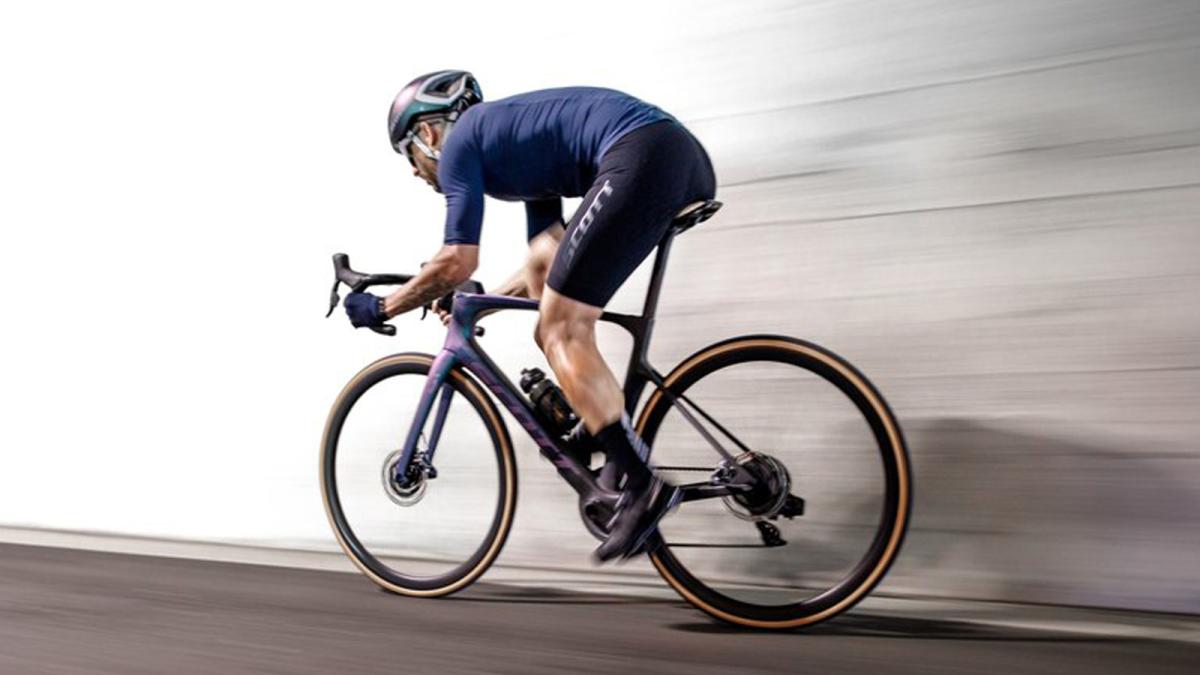When discussing the categories, we mentioned that when choosing a bicycle, the most important questions are: where and how to use it. The camp of road bike users is much easier to define in this way than, say, the question of whether we need a cross or trekking machine. In one sentence: those who love speed and take their bike mainly to ride their favorite training laps or paved hiking trails should choose a road model.
Of course, the situation is not that simple, since after the turn of the millennium, several subcategories of road (or steering) bicycles have emerged, among which it no longer matters at all what we buy. Obviously, the models intended for road racing have remained, with very light, rigid carbon frames and sporty, aero geometry. However, the endurance (comfort) models are now especially comfortable, they are equipped with balloon, 28 or 32 tires. There are also special time trial/triathlon bikes designed for specific sports.
Aero racing bikes are mostly the same as road bikes used by professionals, but they can differ in geometry. There are already bikes made with more comfortable geometry, but with otherwise flattened shapes, designed in the spirit of aerodynamics. It should be known that the cyclist's aerodynamics are primarily determined by the position on the bike. Air resistance can be reduced by the shape of the "tubes" and the integration of the cables, and the bike will be cleaner and more beautiful. Many hobby cyclists choose this style of model for the latter reasons, even if it is not the most suitable for them.
If you don't compete, but mostly take your bike out for hobby sports, you'd do better to look for comfort (endurance) road bikes. Comfort is determined by several properties. On a comfortable bike, the body position is more comfortable and the back bends less than on a racing machine. In a given size, the front tube is longer, so the front of the bike is higher, and the top tube is shorter, so you can hold the handlebars shorter. The steering stem is also shorter by default. The fork angle is also flatter, as a result of which the steering is less aggressive, but the bike behaves more stably.
The endurance road frame is more flexible in terms of being more tolerant of road faults, and this type of comfort is also facilitated by the more balloony (for example 32 mm) tires, which can be used at lower pressure than is usual for racing machines. Fortunately, there is no longer any need to make compromises at the expense of tire size with disc brake bicycles, which are slowly gaining ground these days. On the comfort highways, the transmission also assumes that the owner is in less good condition than the pros, a 34 chainring at the front and a 32, 36 or higher chainring at the back can also help to overcome difficult climbs.
Comfort bikes have almost only advantages for a hobby cyclist, as they get less tired while cycling due to the comfortable posture and better tolerance of road faults. At first it may seem like a contradiction, but in the long run someone can be faster on such a bike than on the country roads designed for racing. Because on the racing machine, the back and waist get tired sooner in the deeply forward posture, and from then on, we become slower and it is more difficult to exert force. Another advantage is that, due to the balloon tires and the greater ride comfort, these bicycles can be used in everyday traffic, and you can even venture on bumpy dirt roads with them. It is interesting that cyclocross bikes, which are the ancestors of gravel bikes, are limited to 33 mm tire size in competitions, and many endurance road bikes already offer this size. Cross tires usually fit in the frame.
Road bikes can be very different from a technical point of view, really only the shape and bent handlebars are in common. Depending on use and price category, carbon, aluminum, steel frame, carbon or steel fork, different levels of transmission and braking systems. What is also worth noting here is that the conquest of disc brakes in this category has also taken place. This seems to be an irreversible process, even if, according to many, models with traditional horseshoe brakes are more suitable for road racing.
SRAM also tried to force another new trend, namely the single chainring at the front. However, this definitely means a compromise either in terms of the transmission range or the jumps between gears. Rather, only gravel bikes are fitted with a chainring in the front and a row with a wide span (up to 42 teeth at the top), but in this case the transitions between the gears are not smooth enough. However, on a country road, the slope of an ascent usually does not change as radically as it does off-road. In other words, the 1x11 and 1x12 systems, which are common on mountain bikes, are not so successful on country roads, 2x11 or 2x12 (possibly 2x10) drivetrains can be used better.
The wheels for racing roads are made with carbon rims above a price level (singó or tubeless ready). With some manufacturers, they choose a particularly cheap set of wheels for the specification, precisely because amateur racers also like to buy their favorite wheels separately, so they don't lose a lot of money if the factory one is not to their liking. For comfort country roads, the wheel set depends on the price, and single-seaters are not so common, but you can find light carbon rims here as well. The more serious endurance roads already offer the option of a system without an inner tube. These reduce the risk of impact puncture to almost zero.
Other accessories such as handlebars, handlebar stem, saddle, saddle stem can also differ greatly in the different subcategories, almost only the primary feature, the bent handlebar, is the same. But this also has a classic, anatomical and compact bending, with the latter having a smaller distance between the upper and lower grip. The steering stem on racing machines is longer, 120-, 130-, or even 140 mm, on comfort roads it is shorter, for example 100 mm, and so on.
In relation to the steering wheel and steering wheel, it is also worth talking about full integration, since there are no longer visible cables on the more expensive highways. It is a fact that we get beautiful, clean-looking bikes this way, but servicing or changing the fork from 110 to 120 is not always an easy task... In other words, we should try to make sure that the size is perfectly correct at the time of purchase.
As with disc brakes - especially in the top category - electronic shifting also gained ground in favor of mechanical ones. We also have to accept this, because even though we might prefer mechanical gears, it happens that we can pair a bicycle computer/wattmeter display with electric controls, and we make our job more difficult if we have a traditional mechanical set. Shimano, for example, will not produce a mechanical shifter in the upper category in the future...
Briefly summarizing the point: even among road bikes, we can choose from a variety of models, but we can still find a common point: these bikes are mainly made for sports and active recreation, especially on asphalt. For example, if someone is looking for a bicycle for transportation or everyday use, browse in the cross / trrekking category.



